#it was that saving and loading were just diegetic mechanics of the way the world functioned.
Text
since its heavily implied if not just already true that the red soul (the analogy/representation for the player) in deltarune is the same one from undertale and since presumably deltarune’s still going to be more of a “game mechanics just kind of exist in sort of a magic way in universe” kind of meta like undertale is rather than a “ohhh creepypasta the video game is alive” thing that would basically make it so that “Varyingly amoral floating heart thing that can hop dimensions and keeps possessing children to do rpg battles” is just sort of like, a "character” that exists in these games. As a very literal player-insert yes but still just kind of like there as a thing that exists. I do wonder if they’ll ever give some sort of in-universe context for it now that deltarune’s made it more of a focus or if we’re just meant to accept that part and concentrate more on just like the effects of it
#in undertale it wasnt that like flowey was aware you could save and load a video game file#it was that saving and loading were just diegetic mechanics of the way the world functioned.#so presumably dr isn't literally going to have someone go Hi person who is pressing keys on a keyboard playing this video game#though very on the nose metaphors that read that way at first glance aren't out of the question i suppose#That's also why i think the people overanalyzing ralsei telling you about keyboard buttons are a little silly#the froggits in undertale do that too. i think that's just because you need to know what buttons to press#making a video game with absolutely no explanation of what buttons to press for lore reasons would be. a bit confusing#mypost#dt
14 notes
·
View notes
Text
initial thoughts
cassandra reading varrics memoir at the end of trespasser was soooo good i love her sm
despite the game having been out for 9 years and being spoiled on most major things there were still some things i never got spoiled about. wild
not knowing exactly how some quest chains and major story decisions work, and not having been spoiled on them, actually turned out to be bad for me. some things happened that i didn't know were possible and would have avoided, but by the time they happened, the events that caused them were already like 20+ hrs of gameplay back. which is frustrating. these were things i really had no way of knowing would happen without looking it up far in advance. im the type of player who saves religiously in case i need to go back a little ways to fix things, but im not willing to go that far back
the war table....... is a mechanic. UX/game feel good. systems bad. the experience of going to the table, getting all your advisors together, studying the map, choosing which method to deal with different events, the diegetic menu - great! having to Wait Real Time to unlock content, and not knowing which content is important, and the sheer quantity of dumb operations that just crowd the map - bad. annoying. the reason i failed to do all the personal quests even though i wanted to and thought i had
this game was a poor attempt at open-ish world. it did not need to be this long or big. long load times and slow transitions were of course hardware limitations, but they are just painful, and could have been avoided if theyd made different design decisions. horseriding kinda feels like ass. most of the activities that populate the maps are pointless bloat to keep you there longer and get more mileage out of areas youve already moved through. of course this was 2014 and we have to try things to learn how to do them well but there were a lot of mistakes here.... lets do better guys
romanced dorian. wish you could be poly in this game cause i am not spending any more time in it but i did wanna see josephines romance...
i know shes kind of popularly disliked in the fandom and i saw a post a while ago saying shes really not that bad and people are just racist or misogynistic or whatever. but having finished the game now. i do not like vivienne. she pissed me off really bad and i wanted to kick her out but couldnt. and i never want to kick out companions in games
sera also irritated me but in her case i feel like its just cause some of her writing is not the best lol
i hate to say it as i was a certified cullen hater for the longest time. but you know what. he got better and i like how his arc went / how hes developed across the games. cullen girlies i understand you now. will you forgive me
and to be honest. yes solas is a bastard but hes not that bad.... maybe its because ive been desensitized by having been spoiled long ago but i think hes fine as a character/villain reveal. im not mad. he is not sexy though yall need help. that is an egg.
overall plot writing..... meh. the stuff they did with elves and elf gods and all is a bit convoluted, and ofc the whole mage templar war thing was so messy and uncomfortably centrist. and they really just continue to present qunari in A Way. really hope they do better next game
0 notes
Text
I Played Cyberpunk 2077

Ultimately, Cyberpunk 2077 is an excellent video game. It’s hard to talk about it without acknowledging the backlash that it received around its launch, but the backlash was directly proportional to the amount of marketing that it got. This happens to a lot of games – and frankly, a lot of my favorite games. If I were working at CD Projekt RED and I was responsible for the kind of marketing that resulted in the kind of expectations that they built for themselves, I’d have to take that sort of stuff into deep consideration. But, as someone who bought the game, enjoyed the game, and desperately wants to talk about the game, I’m not sure that it matters. So, to reiterate: Cyberpunk 2077 is good.
There’s so much game to Cyberpunk that it might be easier to start by talking about my favorite part of it that isn’t a game: the photo mode. I’ve joked before about my favorite gameplay loop in Star Citizen being “taking screenshots,” and that’s not my intent here, but some of my favorite games in recent memory have made it easy to look over the memories I made during their runtime. Interspersed within this review will be some of my favorite screenshots that I took – the inclusion of precise controls for things like depth of field, character posing/positioning, and stickers/frames helped to make my screenshot folder feel less like a collection of moments in a game and more like a scrapbook made during the wildest possible trip to the wildest possible city.
And what a city it is. Night City is my favorite setting in a video game in recent memory. It’s not incredibly difficult to make a large environment, but to make a meaningful environment where every location feels lived-in and the streets are dense with things to see and do? That’s a challenge that very few studios have managed to step up to. More than that, Night City feels unique in the landscape of video game cities – whereas a city like Grand Theft Auto V’s Los Santos is rooted in a reality we’re familiar with, Cyberpunk’s retro-futuristic architecture (and overall aesthetic) help lend it a sensibility that we’re unfamiliar with. It really feels like stepping into another world - fully fleshed-out, fully envisioned.
The environment is obviously beautiful and unique, but I was surprised by just how ornate it was. The thought and consideration that went into details as minor as the UIs you’ll encounter in and on everything from car dashboards to PCs and menus both diegetic and otherwise helps the entire world feel diverse, detailed, and cohesive. While everything feels of a kind and everything is working towards the same design goals, the sheer amount of variety was shocking.
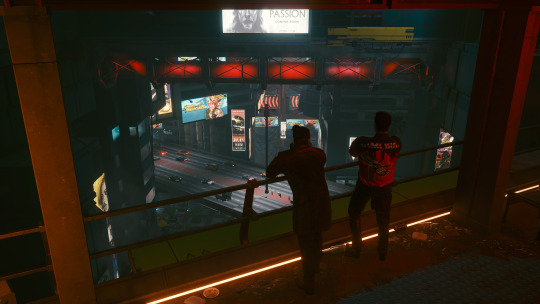
The biggest thing that stuck out to me about Night City itself within just a few hours of playing was how vertically oriented it was. Not just in the “there are tall buildings” sense, though there certainly are tall buildings – I’m talking about the way that Cyberpunk uses verticality to tell stories. The first time that you end up high enough above the skyline to see rooftops will inevitably be during one of your first encounters with Night City’s elite. The hustle and bustle of street life fading away as an elevator climbs up the side of a building and you emerge into a world you aren’t familiar with was astounding. That claustrophobic feeling of being surrounded by monoliths isn’t only alleviated by attending to the rich, though – for similar reasons, my first journey out of the city limits and into the “badlands” will stick with me. Cyberpunk successfully manages its mood and tone by controlling the kind of environments you’ll find yourself in, and while that may seem like a simple, sensible, universal design decision, its consistent application helped ground the world for me in a way that made it feel more real than most of its contemporaries.
Something else that makes Night City feel real is how Cyberpunk implements its setpieces. In a decision that reverberates throughout the rest of the game, CD Projekt was clearly all-in on the notion of immersion and seamless transitions. While it was consistently surprising and exciting to find bombastic moments embedded in the world’s side content (one standout involves Night City’s equivalent of SWAT descending from the sky to stop a robbery in an otherwise non-descript shop downtown), it never took me out of the world. And, on the other end of the experience, the number of memorable, exciting story moments that were located in parts of the city that you had wandered by before helped make the world feel almost fractal, this idea that every building and every corner could house new adventures or heartbreaks.
One thing that did take me out of the experience, unfortunately, were a few of the celebrity (or “celebrity”) cameos. While I think that the core cast was well-cast, with Keanu Reeves as Johnny Silverhand in particular being an inspired choice, the game, unfortunately, wasn’t immune to the tendency to include recognizable faces just because they were recognizable. Grimes plays a role in a forgettable side quest that felt dangerously like it only existed because she wanted to be in the game. There are also an almost concerning number of streamer cameos (“over 50 influencer and streamers from around the world,” according to CD Projekt), and while most of them completely went by me, the few that did hit for me only served to disrupt the world. The only perceived positive here is that most players won’t have any idea who these people are.
Unfortunately, that wasn’t the only thing that broke immersion in the game. Due to what I can only assume are particularly harsh memory restrictions imposed by the game’s release on last-generation hardware, the game has some of the most aggressive NPC culling that I’ve ever seen. While NPCs don’t strictly only exist in screen space, it often feels like they do, as simply spinning the camera around can result in an entirely new crowd existing in place of the old one. This is obviously rough when it comes to maintaining immersion in crowded spaces on-foot, but it gets worse when you’re driving. Driving on an empty road, rotating the camera, and finding that three seconds later there was an entire legion of cars waiting for your camera to discover them, far too close to slow down, was always a deadly surprise. It doesn’t help that your cars take a while to slow down.

Cyberpunk’s approach towards cars in general is interesting. While I certainly had trouble with them when I began playing, I eventually began to get into their groove. If you want to learn how to drive effectively in Cyberpunk, you have to learn how to drift. After the game’s latest substantial patch, the team at CD Projekt finally fixed my largest problem with the game’s driving – the minimap was simply too zoomed-in, making it difficult to begin to make the right decisions on when and how to turn when traveling at speed. Now that that's resolved, however, whipping and spinning through the streets is fun, and the cars feel appropriately weighty. I’ll still occasionally boot up the game just to cruise around its streets and listen to the radio.
Speaking of the radio, did I mention that Cyberpunk 2077 has one of the greatest game soundtracks that I’ve ever heard? The radio is filled with great original songs from some pretty great musicians, but that’s not where the soundtrack’s beauty starts and it certainly isn’t where it ends. The original soundtrack (composed by P.T. Adamczyk, Marcin Przybylowicz, and Paul Leonard-Morgan) was consistently beautiful, moving, and intense. The world feels gritty and grimy but ultimately beautiful and worth saving, and a great deal of that emotion comes from the soundtrack. While the heavy use of industrial synths could’ve lent itself towards music that existed to set tone instead of form lasting memories with memorable melodies, the sparkling backing tones and inspired instrumentation helped keep me humming some of its tracks for months after last hearing them in-game. I’m no musical critic, I don’t know how much I can say about this soundtrack, so I’ll just reiterate: it’s genuinely incredible.
It certainly helps that the encounters that so many of those tunes are backing up are exciting as well. I was expecting middling combat from the company that brought us The Witcher 3, and while the experience wasn’t perfect, it was competitive with (and, in many ways, better than) the closest games to it than I can point to, Eidos Montreal’s recent Deus Ex titles. Gunplay feels tight, shotguns feel explosive, and encounter spaces are diverse and full of alternate paths and interesting cover. My first playthrough was spent primarily as a stealth-focused gunslinger, using my silenced pistol to cover up the mistakes that my feet made when trying to avoid getting caught. Trying to sneak into, around, and through environments helped emphasize how complex the environments actually were. While it’d be easy to run into a wealth of the game’s content with your guns loaded and ready to fire, that may contribute to a perceived lack of depth in the game’s world design. I’m trying to write this without considering what other people have said about the game, but this particular point has been something of a sticking point for me – there are individual, completely optional buildings in Cyberpunk that have more interesting, considered level design than some entire video games, and the experience of evaluating and utilizing them was consistently mechanically engaging and exciting.
The sheer number of abilities that the player has can be almost overwhelming. While leveling does encourage the player to specialize into certain traits, especially when said traits can also serve as skill checks for the dialogue system and some traversal opportunities, every trait houses a bundle of skills that each house a sprawling leveling tree. Far from the kind of “three-path EXP dump” that you’ll find in a great number of AAA titles, Cyberpunk’s leveling experience can be legitimately intimidating. It’s difficult to plan the kind of character you want to play as when you’re trying to project eighty or a hundred hours forward for a character that will be constantly encountering new kinds of challenges. I certainly didn’t begin my playthrough by wanting to be a stealth-focused gunslinger – in fact, I was originally aiming for a melee-focused hacker build. While I was drawn to what I was drawn to, hearing stories from other players about the kind of builds that they ultimately considered to be overpowered made one thing exceedingly clear: Cyberpunk is a game that rewards every kind of play, possibly to its own detriment.
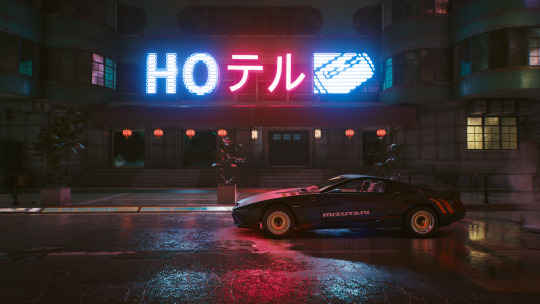
Cyberpunk’s main story is notably short. I wouldn’t consider this to be a problem, considering the sheer amount of engaging, exciting, heartfelt side content, but it might be the core of the difficulty scaling plateauing so early on. As you progress deeper into the game you’ll find that almost every build, as long as you are willing to commit to something, is more than viable. Look around long enough and you’ll find people saying that every single build is overpowered. For me, that fed into the central power fantasy in an exciting way. By the time that I rolled credits a hundred hours in I was more or less unstoppable, walking into rooms and popping every enemy almost instantly. For others, this was a problem – it can be frustrating to feel like all of your work to become stronger wasn’t met with an appropriate challenge when the time came to put it into practice. This is a difficult problem to solve, and I don’t have a solution. I’ll fondly remember my revolver-toting, enemy-obliterating V, though, so I can’t complain.
Regardless of the scaling, however, the content you play through to arrive at that pinnacle of power was consistently, surprisingly robust. While the differentiation between “gigs” and “side quests” is confusing (word for the wise: gigs are generally shorter and more gameplay-centric missions that are designed by CD Projekt’s “open world” team while the side quests are made by the same team that made the main quests and are generally longer and more narrative-centric), both kinds of side content are lovingly crafted and meaningful. Of the 86 gigs in the game, every single one of them takes place in a unique location with a hand-crafted backstory and (almost always) a wealth of different approaches. These don’t exist separately from the rest of the game’s design philosophy, even if they are made by a separate team, and you’ll often find that decisions made outside of gigs will reverberate into them (and, sometimes, the other way around). I’ve played a great deal of open world games, and never before has the “icon-clearing content” felt this lovingly-crafted and interesting. While the main quests will take you traveling across the map, the side content is what really makes it feel dense and real. You’ll be constantly meeting different kinds of people who are facing different kinds of problems – and, hey, occasionally you’ll be meeting someone who has no problem at all, someone who just wants to make your world a little bit brighter.
It’s surprising, then, that one of the most obvious ways to integrate that kind of content in Cyberpunk is so sparsely-utilized. “Braindances,” sensory playback devices used to replicate experiences as disparate as sex, meditation, and murder, play a critical role in some of the game’s larger quests, but they almost never show up in the side content. You would imagine that the ability to freely transport the player into any kind of situation in a lore-friendly way would’ve been a goldmine for side content, but its use is limited. This isn’t even a complaint, really, I’m just genuinely surprised – I wouldn’t be surprised if they used them more heavily in 2077’s expansions or sequels, because they feel like an untapped goldmine.
Another thing that the game surprisingly lacks is the inclusion of more granular subtitle options. While the game does let you choose the important stuff – whether or not you want CD Projekt’s trademark over-the-head subtitles for random NPCs, what language you want the subtitles to be in, what language you want the audio to be in – it doesn’t include something that I’ve grown to consider a standard: the ability to turn on subtitles for foreign languages only. As the kind of player who avoids subtitles when possible, I went through most of Cyberpunk with them off. Unfortunately, a tremendous number of important cutscenes in the game take place in languages other than English, and I didn’t know that I was supposed to understand what these characters were saying until I was embarrassingly far into one of the prologue’s most important scenes.
NOTE: I was pleasantly surprised to discover after replaying the ending of the game earlier today that they've fixed this issue in a patch. Nice!
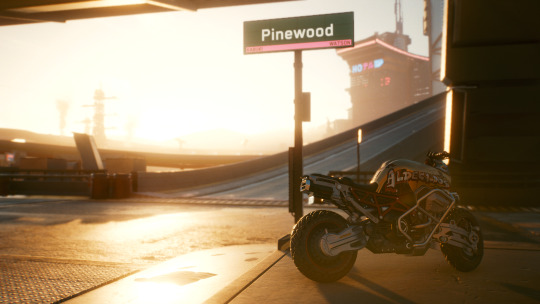
I can only complain about the game’s language support so much, because there’s something important that lies between the player and the story they’re there to experience: a fucking incredible English localization. Ironically, it’s so good that I can’t help but imagine that most players won’t even think about it. It’s easy to notice and talk about an excellent localization when it’s from something like a JRPG, something with a clearly different style from what you’d expect from a work made in English, but never once in my entire playthrough did I even briefly consider the idea that it was natively written in anything other than English. I knew that CD Projekt was a Polish studio, but I just assumed that they wrote in English and localized it backwards. The language is constantly bright and surprising, the jokes land, the characters have memorable quirks, everything feels natural, and the voice acting is legitimately some of the best that I’ve ever heard in a video game. Both versions of the main character’s voice were damn-near instantly iconic for me, landing up there with Commander Shepard in the upper echelon of protagonist VO. I can’t praise it enough.
That said, even if the localization was incredible, it’d be hard to appreciate if the meat of the story wasn’t up-to-snuff. I was ecstatic to discover, then, that Cyberpunk 2077 has an incredible story. Every great story starts with a great cast of characters, and Cyberpunk hit it out of the park with that. The core cast of side characters are some of my favorite characters in years. Judy, Panam, River, and Kerry are all memorable, full, charming people. Kerry Eurodyne in particular is responsible for my favorite scene in a game since the finale of Final Fantasy XV. The quest “Boat Drinks,” the finale of Kerry’s quest line, is quietly emotional and intensely beautiful. He, and the other characters like him, are more than the setting they’re in, and the way that the game slowly chews away at the harsh and bitter exterior that the world has given them as it reaches to their emotional, empathetic core consistently astounds. Night City is a city full of noise, violence, destruction, and decay, but you don’t have to participate in it. You don’t have to make it worse. You can be different, and you can be better. You don’t get there alone, you can’t get there alone, and Cyberpunk is a game that revels in how beautiful the world can be if we are willing to find the light and excitement in the people around us.
Of course, Cyberpunk is a video game, it’s an RPG, and the story is more than a linear progression of memorable moments. Something that struck me while making my way through Cyberpunk’s story was how expertly and tastefully it implemented choice. I’m used to games that give you flashing notifications and blaring alarms whenever you're able to make a decision that matters, so I was initially confused by how Cyberpunk didn’t seem reactive to the things I said and did. The game would give me a few options in conversations, I’d select one of them, and then the story would progress naturally. However, as I continued, I began to notice small things. One character would remember me here, a specific thing I said twenty hours before would be brought up by someone there, an action that I didn’t even know I had the choice to not take was rewarded. The game slowly but surely established a credibility to its choices, a weight to your words, this sense that everything that you were saying, even beyond the tense setpiece moments that you’d expect to matter, would matter. It was only after going online after completing the game that I realized just how different my playthrough could’ve been. While nothing ever reached the level of the kind of divergent choices that The Witcher 2 allowed, there were still large chunks of the game that are entirely missable. Three of the game’s endings can only be unlocked through the completion of (and, in one case, specific actions in) specific quests, and multiple memorable quests were similarly locked behind considerate play. This isn’t really a game that will stop you from doing one thing because you chose to do something else, most of the choice-recognition is simply unlocking new options for the player to take, but it always feels natural and never feels like a game providing you an arbitrary fork in the road just for the sake of making it feel artificially replayable. CD Projekt has already said that they made the choices too subtle in Cyberpunk, but I deeply appreciate the game as it is now – more games should make choices feel more real.
It helps that the dialogue system backing up some of those choices is dynamic and the cutscene direction backing those scenes up is consistently thrilling. The decision to lock you in first-person for the entire game was an inspired one, and it resulted in a bevy of memorable scenes made possible by those interlocking systems. There are the obvious ones – being locked in a smoky car with a skeptical fixer, getting held at gunpoint by a mechanical gangster with his red eyes inches away from your own and a pistol’s barrel just barely visible as it presses against your forehead, having to choose between firing your weapon and talking down someone with a hostage when in a tense, escalating situation. There are also a million smaller ones, situations where the scale of the world becomes part of the magic. The first time that I sat down in a diner and talked with someone I had to meet or the first time that I rode along through the bustling downtown of Night City as a politician sized me up will stick with me because the perspective of the camera and the pacing of the real-time dialogue interface combine to make almost everything more powerful. There’s so much effort put into it – so many custom animations, so many small touches that you’d only see if you were staring intensely at every frame. All of that effort paid off, and the controversial decision to strip third-person out of the game was ultimately proven to be one of the smartest decisions that CD Projekt has ever made.

Another decision that helped power an exciting, engaging story was how the game freely manipulates the time and weather during key story moments. It’s a small touch, it’s one that you won’t notice unless you’re looking for it, but every once in a while you’ll walk into a place during a crystal-clear day and come out five minutes later to discover that it’s a cold, windy, rainy night and you have a city to burn. Along with the first-person limitation, this initially feels like something that could only harm immersion, but when it’s backed up by a story that motivating and scenes that thrilling you’d be hard-pressed to notice it outside of the flashes of telling yourself that this scene or that scene is the best that you’ve played in a long time. This also helps avoid a problem that games like the Grand Theft Auto series consistently face – instead of letting scenes happen at any time, compromising direction, or doing something like a timelapse, sacrificing immersion, Cyberpunk manages to always keep you in the action while also presenting the action in its most beautiful and appropriate form. There are moments where it truly feels like it’s meshing the kind of scene direction that’d be at home in a Naughty Dog game, the gameplay of Deus Ex, and the storytelling of the WRPG greats, and in those moments there is nothing else on the market that feels quite like it.
I sure have talked a lot about this game’s story, considering the fact that I have barely brought up its central hook. The early twist (unfortunately spoiled by the game’s marketing), the placement of a rockstar-turned-terrorist-turned-AI-construct firmly in your brain after a heist goes wrong and your best friend dies, helps establish a tone that the rest of the game commits to. Johnny Silverhand starts as an annoying, self-centered asshole with no real appreciation for how dire your situation is, but by the end of the game he had more than won me over. Reeves’s performance was really stellar, and the relationship between him and V is incredibly well-written. More than that, his introduction helps spur on a shift in the way that you engage with the world. The first act is full of hope, aspiration, the belief that you can get to the top if you hustle hard enough and believe. After you hold your dying friend in your arms and are forced to look your own death in the eyes, though, things begin to turn. Maybe the world is fucked up, maybe it’s fucked up beyond belief. But there Johnny is, telling you to fight. Why? Every time you fight, things get worse.
But the game continues to ruminate on this, it continues to put you in situations where fighting not only fails to fix the problem, but it makes it worse. Despite that, it’s positive. For me, at least, Cyberpunk’s worldview slowly came into alignment, and it’s one that I can’t help but love. Cyberpunk 2077 is a game about how important the fight is, how important believing in something is, even if you’re facing impossible odds, even if there’s no happy ending. It’s a story that posits that giving up is the worst ending of all, that your only responsibility is to what’s right and to the ideals that you and the people you love want to live up to. The game uses every story it can tell, every character it can introduce you to, and every encounter it can spin into a narrative to drive that home. And, when the ending comes, it was phenomenal. All of the endings were powerful, effective, and meaningful to me, but I’m more than happy that I went with what I did.
Cyberpunk 2077 is an excellent video game. It’s not flawless, but no game is, and at its core it's one of the most fun, beautiful, narratively engaging, and heart-filled games that I’ve ever played. I couldn’t recommend it highly enough, and I sincerely hope that everyone who has skipped out on it because of what they’ve heard is able to give it a shot someday. Maybe they’ll love it as much as I do. Wouldn’t that be something?
3 notes
·
View notes
Text
Life is Strange: Before the Storm Game Review (7.5 / 10)

**SPOILER ALERT** (If you’d like to avoid spoilers, but still receive my input on the game, the Intro and Final Thoughts will always remain spoiler free.)
Intro:
I was recently speaking with a friend who described herself as “anti-video game.” When I asked her about it, she responded with the common belief that she found them a waste of time. In a market dominated by MOBAs and Battle Royales, I decided to make my case for video games from the narrative side of things, asking her if she had heard of (the original) Life is Strange game. She hadn’t, but immediately wanted to know why it was any different, why it wasn’t a waste of time, and how it changed / impacted me for the better.
I explained to her that Life is Strange reminded me of the great struggles each and every person faces. It shed light on the everyday ways, big and small, that I could help make burdens lighter for others. It reminded me that every choice in life matters, and not only did it show me ways to love, but it inspired me to love better, to cherish every beautiful moment, and to be grateful for every person whose life touches mine, or at the very least not to take their presence for granted. Needless to say, after our conversation, she was very interested in playing the game.
This power to change me is what made the first Life is Strange so great, and additionally what made me so eager jump into the 2017 prequel series, Life is Strange: Before the Storm. However, from its early stages, developer Deck Nine made it clear that Before the Storm would be a different game, and after playing it, I found that indeed it was. In some ways it surprised and thrilled me, and in other ways it returned to that same nostalgia I missed from the original game. There were, of course, also some elements of the game I would have done differently. I’ll give my thoughts on the game below, focusing mostly on its narrative elements, and as always leave a summarized TLDR (spoiler free!) version in the Final Thoughts section. Thanks for giving me a read, and here’s to making and playing the best games possible!
What Worked:

Effectively chronicles the evolution of Chloe. Before the Storm (BTS) takes the player through key events of Chloe’s past, which made her into the familiar blue haired punk from the original Life is Strange (LIS 1). It explores flashbacks and dream sequences of her father’s death and Max’s departure, all while showcasing other significant moments of Chloe’s formation: David’s moving in, her expulsion from Blackwell, and, of course, the relationship with Rachel Amber, powerful enough to break her by its ending. Every step along the way of Chloe’s path seems appropriate and motivated, and it’s fascinating to witness the moments that make Chloe who she is when you meet her in LIS 1. It’s well done, and something I really enjoyed.
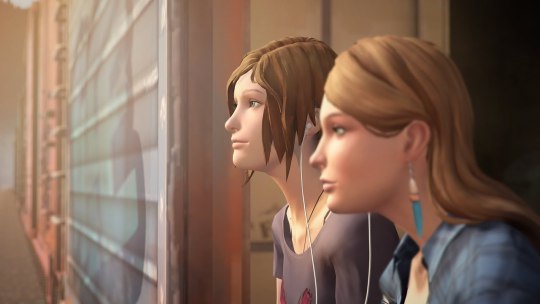
Equally satisfying paths of friendship and romance. Just like in the original game, BTS unapologetically allows the relationship between its strong female protagonists to take a romantic turn. However, in an even braver move, the game also allows the player to have them remain friends, sending the story down a path no less developed or fulfilling. In a world where saying "we're just friends" is a strategy for rejecting unwanted lovers and the friend zone is something to be dreaded (speaking from personal experience are we?), this series continues to advocate for emotional intimacy in friendships, inspiring us to go deeper, love better and in a more supportive way, reminding us how life-giving (and often under appreciated) our friendships can be. This was a thematic thread I was hoping to see expanded upon from the LIS I, and once again, Deck Nine didn't disappoint.
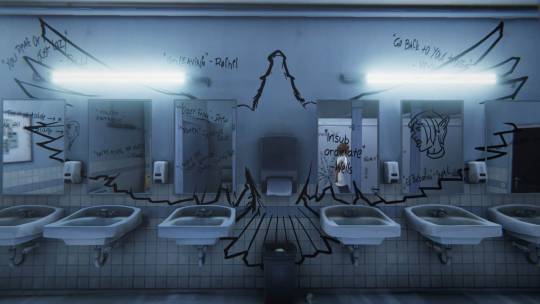
Beautifully interwoven symbols & motifs. Pay close attention to anything related to ravens, fire, eyes, or lying. These all start small, but build powerfully and are visited throughout, tying the story together. The game also revisits images from LIS 1: the doe, storm, totem pole, squirrels, etc. drawing parallels between the games through these symbols (Chloe’s raven to Max’s doe - the storm to the wildfire). And while Max left her mark on the world through her photography, Chloe prefers a more literal approach. Her graffiti pen tags (along with her outfit selections) allow the player to further interact with these symbols, in addition to making fun collectibles to hunt down. It was really neat to notice these little details which the writers and designers crafted with care, and it definitely added to the impact of the story.
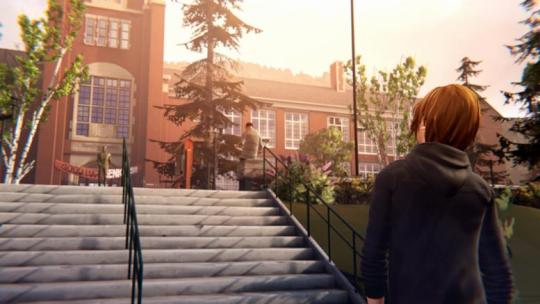
A nostalgic return to Arcadia Bay. The contrast of new adventures unfolding in familiar locations was a really neat element of the prequel series. The game provides the player with plenty of moments to simply take in their surroundings alongside a killer soundtrack (more on that later), and I definitely took advantage of it, especially in Chloe’s room, Frank’s RV, the junkyard, and all over Blackwell. It was so evocative just to see these places again, and interesting to get Chloe’s reflections on them. Like Chloe, these places also evolve as her backstory plays out (e.g. junkyard hangout room, Chloe’s truck) providing the player with a deeper understanding of the LIS 1 world’s origins.

The soundtrack. Deck Nine placed their game’s music in different hands than Dontnod, but ones no less apt. Daughter did an amazing job creating haunting, emotional, nostalgic, atmospheric songs to accompany Chloe’s journey, both diegetic (like Skip’s song) and not. The game also features other singles like Speedy Ortiz’s “No Below,” which perfectly capture what Chloe’s going through at this point in her life. It’s a soundtrack I simply had to purchase after playing through the game, and when I’m out and about and the songs come up on shuffle, I’m immediately taken back. I almost start expecting to see objects highlighted in white as I look at them.

Morally and philosophically thought provoking themes. Of course, like LIS 1, the game explores friendship, love, care, and trust, but overall, the central question the game asks is: Is it better to protect someone you love with a lie, or honor them with the truth? Whether or not lying, or concealing the truth, is always wrong is a very interesting question, and it’s one I’ve thought a lot about (I’m actually working on a theology essay about it - but that’s another blog). And, while it’s a question other games have explored (I’m looking at you, The Last of Us) the game provides a unique take on the question by having the player answer it with his/her final choice, ending the game with a more philosophical but significantly less dramatic choice than LIS 1, but nonetheless thought provoking in its own right.
What Got in the Way:

Chloe resists player shaping too much, much more than Max. With Max, I felt like her power of time control was in my hands. I could wield it for mischief, exact my justice as judge, jury, and executioner, or show mercy and love. Also, this power combined with the game’s mechanic of allowing you to restart from any point in the story made it easier to play Max right, ensuring that her story played out the way you wanted it to. Naturally, without Max’s time powers, Chloe’s decisions weigh more and are harder to undo. While this choice was intentional on behalf of the studio, rather than teaching me something about Chloe or life, I just wound up Googling the results of the choices more often or regretting not doing so as I’m smashing buttons, desperately trying to skip cut-scenes after loading a previous save. Basically, reversing your choices is way too tedious. Before you make a choice, get ready to live with it.

Too many unconnected dots between BTS and the original game. While BTS uncovers much of LIS 1’s backstory, it still leaves many questions unanswered. For example, what kind of relationship did Rachel have with Frank? Or, how did Rachel first become involved with Nathan’s photography experiment gone-wrong? These were things I was expecting to understand before the game’s end, and I was surprised to see the credits roll first. If it were up to me, I would have gone through all of that and ended the game just after the start of LIS 1, when Chloe reunites with Max.

Humanizes the villains until there’s no one left to hate. Almost. At one point or another in the game, Chloe comes up against Drew, David, Principal Wells, Nathan, Mr. Prescott, Mr. Amber, Sheldon, and Damon as adversaries. With the exception of Damon, who is this game’s Mr. Jefferson (the creepy bad guy who’s evil to be evil) the game attempts to generate sympathy for nearly every antagonist. For example, Drew’s only a mean drug dealer because he’s trying to financially support his little brother and dad. David really cares about Chloe and Joyce, but he lost his best friend in the army. Wells is just trying to protect the school, Nathan was bullied into his perversions, Mr. Prescott loves Rachel too much and is trying to protect her, etc. Sheldon’s genuinely a creep but if you give him what he deserves and tell Damon he’s a snitch, you have to read his desperate texts begging for Mercy.
I actually think the game did a great job humanizing certain characters (David, Drew, Mr. Amber), but I think it was confusing to try to arouse sympathy in the player for Nathan, for example, before his commits his terrible crime. What really put me over the edge was finding a letter in the hospital from Nathan’s dad where he offers to anonymously cover Mikey’s hospital costs. We see him bullying his son, he’s supposed to be the reason Nathan turns to his evil ways, and yet we’re supposed to believe deep down he’s really a good guy?
I get the point. Real people aren’t black and white, good and evil, it’s always more complicated than that. Still, I would draw a distinction between understanding why someone is evil and actually feeling bad for them, and instead of cheapening his power as a threat, I would have left Mr. Prescott among the Darth Sidiouses of Before the Storm.
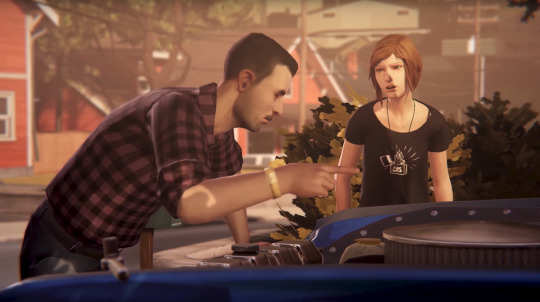
Initially jarring change of voice actors. It just so happens that I began playing Guerrilla Games’ Horizon: Zero Dawn as I started BTS, so I felt like Chloe pulled a Scooby-Doo: The Movie and transported her soul into Aloy’s body, (Ashly Burch voices Chloe in the original game and the protagonist of Horizon: Zero Dawn - quite excellently, in fact) but the change in voice actors shook me up at first. Though it seems like Deck Nine made an effort to get most of the original voice actors, you’ll notice the new voices for David and Chloe. This seems to be the result of a SAG-AFTRA strike, so it wasn’t really under anyone’s control, but still, it would have been nice to have the same actor for the game’s main character. Took me about an episode to get over it and used to it.
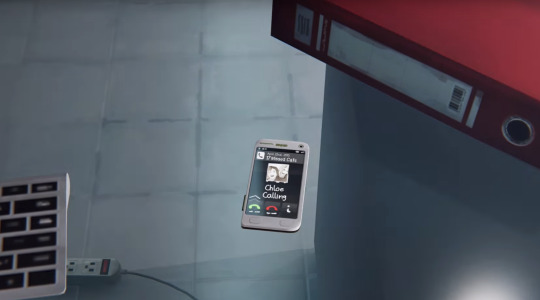
Ends on a sour note. Chloe’s relationship with Rachel made Before the Storm one of the most beautiful stories I’d experienced, and it almost ends on a nostalgic note, panning through photographs that capture their memories together. Instead, the game ends in that infamous dark room where Rachel is drugged and photographed before her murder, with Chloe’s missed calls blowing up her phone. This immediately ripped me from the warm, reflective feeling I experienced over Chloe and Rachel and instead brought back the rage and disgust I had for Nathan and Mr. Jefferson. Whether by ending the game when Chloe meets Max (as I’ve suggested earlier), or ending it on Chloe’s last moments with Rachel, maybe even allowing them to exchange some touching (final - as the player knows it) words, I would’ve ended the game in the mood it so effectively created where I felt both sad to let Rachel go, and grateful for the mark she made on Chloe. Ending it on that final scene seemed like a missed opportunity.
Final Thoughts: (Rating: 7.5/10)

For players who’ve never experienced Life is Strange before, I’d recommend starting with the original series. For those who enjoyed the game, Before the Storm is a definite should-play. It’s worth it for the return to Arcadia Bay’s landscapes and characters alone, but you’ll also discover what Blackwell looked like before Max, who the mysterious Rachel Amber really was, why nearly everyone adored her, and what transformed Chloe from Max’s pirate-obsessed childhood best friend into the blue-haired girl waving a gun around in the girl’s bathroom. However, if you’re expecting it to be too much like the first game, you may be disappointed. To get the most out of it, I’d recommend trying to step into Chloe’s shoes and playing the character as true to herself as possible, rather than trying to shape her choices according to your own preferences. Allow yourself to act impulsively, make mistakes, and brace for the consequences. Undoing Chloe’s actions proves a lot more tedious than those of the time-traveling Max, so try to do it right the first time. Oh, and don’t expect too many answers. You’ll get plenty of great ones, but just like the native spirits of the raven and doe, they have to leave some mysteries unsolved. In the words of Rachel Amber, “life needs a little mystery,” and after all, it’s mystery that makes life strange.
#Game Review#Life is Strange#Before the Storm#life is strange: before the storm#LIS#BTS#max and chloe#rachel and chloe#chloe and max#chloe and rachel#Game#video games#Deck Nine#Square Enix#Dontnod#Unity#Game Writing#Writing#Review#Narrative#Narrative Design#Nostalgic#Telltale#narrative game#lis bts#lis before the storm#Game Writers#gameblr#gamer#gaming
8 notes
·
View notes